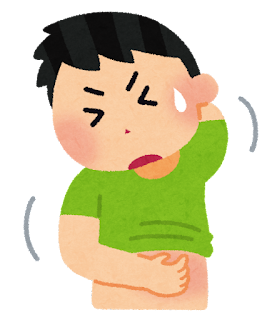Childcare|CHCECE002 #6 - Contribute to the ongoing management of allergies
學習筆記 Childcare
CHCECE002
Ensure the health and safety of children
#6 - Contribute to the ongoing management of allergies
 |
| 來源:いらすとや |
.identify and recognise signs, symptoms and key characteristics of allergies and anaphylaxis
.apply organisation risk management strategies for children with severe allergies
.follow organisation policies and legislative requirements in relation to medication for anaphylaxis
# Allergies
.allergy = abnormal reaction of the body to something in the environment (e.g. food, medication)
.allergic reactions = abnormal reactions of the body to a substance (trigger)
> occur when body recognises a substance (trigger) as harmful
(even it may not be) create antibodies within immune system
.skin, airways, sinues, digestive system → inflame
.triggers
> insects: dust mite(塵蹣)、bees、wasp(黃蜂)、tick(蜱蟲)
> venom (毒液)
> animal fur & skin flakes
> chemicals: latex gloves, industrial / household chemicals
> mould: mushrooms, mould spores
> medication: herbal preparation, prescription / over-the-counter
> plants: grasses, pollens
> food: peanut, shellfish, egg, nuts, sesame, soy products, milk, fish, wheat
 |
| 來源:いらすとや |
.trace (tiny) amounts can cause allergic reactions
.just a smell of food can be enough to trigger
.trigger through
> skin contact / touch
> inhalation / breathing in
> ingestion / eating
> injection
.signs & symptoms
> runny nose
> skin rash
> diarrhoea
> itchy eyes + skin
> wheezing
> swelling of lips / face / eyes
> tingling mouth
# Action plan for Allergic Reactions
 |
| Source: Australasian Society of Clinical Immunology and Allergy (ASCIA) |
 |
| Source: Australasian Society of Clinical Immunology and Allergy (ASCIA) |
# Anaphylaxis
.reactions can be minor / major (anaphylaxis)
.Anaphylaxis = most severe form of allergic reaction, when immune system cannot cope with allergen
> severe
> potentially life-threatening emergency situation
> need immediate treatment
.reaction
> difficulty breathing, talking
> wheezing / coughing constantly
> welts (腫塊), hives (蕁麻疹), body redness / rash
> shock, anxiety, distress
> hoarse voice
> swelling / tightness in the throat
> abdominal pain
> nausea, vomiting
> swelling of tongue
> dizziness / faintness
> rapid & weak pulse
> pale & floppy (young children)
.NQS 2.2.2
plans to effectively manage incidents and emergencies are developed in consultation with relevant, practised and implemented
.who at risk of anaphylaxis
> try to avoid exposure to allergens
> wear medical identification bracelet / necklace
> have action plan
> know own actions (mild / moderate / severe)
> know how to treat
> always carry & know how to use EpiPen (adrenaline auto-injector)
> high risk → carry two EpiPen
# Action Plan for Anaphylaxis
 |
| Source: Australasian Society of Clinical Immunology and Allergy (ASCIA) |
.action plan = explain how to identify + treat mild / moderate allergic reactions, severe anaphylactic reactions
.should have
> name
> date of birth
> medical details
> emergency contact details
> may include photo
.prepared by doctor
.more information: Australasian Society of Clinical Immunology and Allergy (ASCIA)
.Suspected anaphylactic reaction
> administer EpiPen immediately
> call ambulance
> flick out (use fingernail) any insect stings but X remove ticks
> give CPR (if X signs of life)
> lay down the person to prevent drop in BP
> if vomit, place in recovery position
> if more comfortable, allow the person to sit
> X allow the person to stand / walk
# EpiPens
.= pre-loaded adrenaline auto-injectors
.one-use only
.for a person > 20 kg (have junior ver for children 10 - 20 kg)
.into mid outer thigh → ensure rapid absorption
.if uncertain, still give EpiPen
.X improve within 5 mins, give another dose
.when ambulance arrived, give them the used EpiPen and the time administered
# How to use EpiPen
.pull off the blue cover
.place narrower side (orange) against mid outer thigh
.push hard for 10s after / feeling a click
.remove EpiPen
.X touch needle
.recap EpiPen
# How to prevent and manage situations
.prevention + education → best method to deal with anaphylaxis
.ensure parents aware of risk factors
.encourage supportive relationship
.prepare action plan
.ensure children X expose to dangerous allergens
.ensure ongoing education / training + regular policy updates
.update medical details on all children regularly
.reduce risks → X encourage food sharing, X use risk foods' container for art and craft
.have information sessions for staff & children
.avoid "risk foods" at service
.be aware of latex (e.g. balloons, swimming caps, gloves)
.X require parental consent to administer EpiPen (in emergency)
.be aware of plants may attract bees
.practise response to a scenario that involves anaphylactic emergency



留言
發佈留言